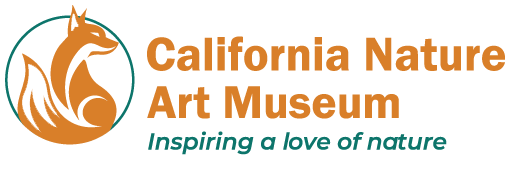Botanical Illustration - Flowers, Plants, & Trees
“Painting is the pathway I chose for my life’s work, but it also chose me. It is the best way I can honor beauty and express my feelings with authenticity, true to what I see and feel in Nature.”
— Chris Chapman
Chris Chapman’s class was held on Saturday,
May 4 and May 18, 2019, 10:00 a.m. - 2:30 p.m. Tuition was $60 with an extra $10 for materials. The class size was limited to 12 people; appropriate for adults of all skill levels.
The class was to immerse yourself in the meditative art of botanical illustration. Whether working with graphite pencil, watercolor, colored pencil, or pen and ink, students of nature could learn to draw and paint growing things and to understand their form and function. A multitude of possible subjects apply; flower or plant, fruit or vegetable, feather or seashell, tree leaves or bark. This is a quiet and calming art of losing yourself in close up observation. Though we strive for accuracy, there is much creativity in plant portraiture.
Nobody sees a flower -- really -- it is so small it takes time -- we haven’t time -- and to see takes time, like to have a friend takes time. ~Georgia O’Keefe
BOTANICAL ILLUSTRATION SUPPLIES
Medium - Choose between:
Graphite Pencils
Colored Pencils
Watercolors
Pen & Ink
White erasers, retractable erasers
Watercolor brushes
Cheap Wide Soft Brush to whisk away eraser bits
Paper towels
Papers: experiment with a variety – cold press, hot press, Bristol, printmakers
Pen & Ink, variety of nibs – Micron .005, .05, .1, etc.
Masking Tape
Florist’s foam or Frog or small vase
Painting Support such as foam core, gator board, cardboard – 8x10” and 11x14”
Sketchbook
Chair cushion (recommended)
Ideas for Subject Matter:
Native or garden flowers, leaves, succulents, lichen, birds nest, feathers, acorns, fruit, veggies (very interesting cut in half), seed pods, sea shells, etc.
About Chris Chapman
Chris Chapman is a prolific California regional artist known for her sensitive yet strong landscapes in pastels and watercolors. Looking close up at the landscape, she’s also created a substantive body of work in California native botanicals.
Born in Pasadena in 1950, her bonds with nature and creative expression were forged early. After studies at University of Oregon, UC Sana Barbara, and Santa Barbara Community College, her livelihood as an artist was realized.
Combining conservation with art, from 2000 to 2013, Chris and painter husband, John Iwerks, lived and painted on the Gaviota Coast. During this time they co-managed Arroyo Hondo Preserve, creating a visitors center, adobe gallery, and natural history illustrations while also teaching art classes at Santa Barbara Community College. Now Chris and John live and paint nearby in the beautiful Santa Ynez Valley where Chris is active with the Wildling Museum. The Gaviota Coast and Eastern Sierra Nevada are enduring favorite subjects.
Chris is a member of the Oak Group, a small but auspicious group of preservation minded painters formed in 1986. Since then, their sales of $3 Million have benefited non-profit environmental organizations for protection of open space. Her botanical work is featured in a permanent installation at Ventura County Art Museum. She is a Signature Member of several national pastel societies and Honorary Lifetime Member of Santa Barbara Art Association.
Click here to visit her website: https://www.chapmaniwerks.com/


